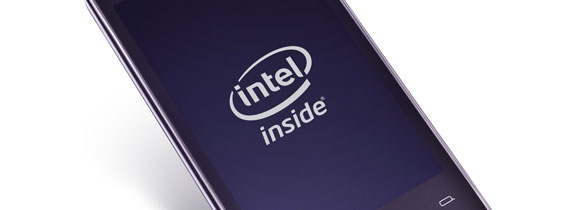Intel has reported 3% growth, including a 5% boost in its data centre business, though the client computing unit continues its slow decline.
July 21, 2016

Intel has reported 3% growth, including a 5% boost in its data centre business, though the client computing unit continues its slow decline.
The company’s efforts to redefine itself are seemingly beginning to pay dividends as a 3% year-on-year decline to $7.3 billion in the client computing business unit was offset by healthy performances elsewhere in the organization. The data centre unit brought in $4 billion in revenues, up 5%, whereas IoT accounted for $572 million, an increase in 2%, and the security portfolio grew 10% to $554 million for the quarter. The Programmable Solutions group also saw a 30% boost to $465 million. Overall quarterly earnings grew 3% to $13.5 billion.
“Our top line results for the quarter came in right in line with outlook, and profitability this quarter exceeded our expectations,” said Brian Krzanich, Intel CEO. “Year-over-year growth this quarter was 3% overall, as we transform Intel into a company that powers the cloud and billions of smart connected devices. We continue to focus on growth in line with this transformation, as evidenced by results in the data centre, IoT, and Programmable Solutions business this quarter.”
Looking forward, the team is forecasting Q3 will bring in revenues of roughly $14.9 billion, which would represent 3% year-on-year growth. Client computing is expected to continue its decline in the high single digits, while double-digit growth is anticipated in the data centre business, funded by cloud players in the second half of the year. CFO Stacy Smith believes growth in the IoT, data centre and memory businesses will counteract any negative impact of client computing.
While the data centre business continues to demonstrate growth for Intel, overnight trading saw share price decline by 3% following the earnings announcement. Investors were anticipating higher growth levels for the data centre group, as Intel forecasted double digit growth previously.
Intel’s efforts to redefine the focus and perception of the business has been ongoing for some time, as the personal computing market segment, Intel’s traditional cash cow, has continued to erode. Back in April, Krzanich outlined the company’s future focus on the company blog, which is split into five sections; cloud technology, IoT, memory and programmable solutions, 5G and developing new technologies under the concept of Moore’s law.
“Our strategy itself is about transforming Intel from a PC company to a company that powers the cloud and billions of smart, connected computing devices,” said Krzanich in the blog entry. “But what does that future look like? I want to outline how I see the future unfolding and how Intel will continue to lead and win as we power the next generation of technologies.
“There is a clear virtuous cycle here – the cloud and data centre, the Internet of Things, memory and FPGA’s are all bound together by connectivity and enhanced by the economics of Moore’s Law. This virtuous cycle fuels our business, and we are aligning every segment of our business to it.”
While the IoT business only grew 2% year-on-year, it would be worth noting this is off the back of a healthy Q1 which saw the unit grow 22%. Krzanich linked the Q2 performance, which was below the teams expectations, to an inventory burn following a strong performance in the first quarter. The team now anticipate double-digit growth through the remainder of 2016.
This was also the second consecutive quarter in which the security portfolio was listed as a separate business unit, previously being incorporated into the software and services unit. The group itself has demonstrated healthy growth over the course of 2016, but has been the topic of speculation surrounding a sale.
Only last month the team were rumoured to be considering a sale of its security business, which was created following the $7.6 billion acquisition of antivirus specialists McAfee in 2010. Although security is one of the larger sections of the Intel business, it was not specifically mentioned as a focus point for the future business strategy during Krzanich’s blog entry in April. While the prospective sale has not been confirmed by the Intel team, separating the unit in the financials could indicate it is attempting to provide a greater level of transparency for potential buyers.
About the Author(s)
You May Also Like








.png?width=300&auto=webp&quality=80&disable=upscale)


_1.jpg?width=300&auto=webp&quality=80&disable=upscale)


.png?width=800&auto=webp&quality=80&disable=upscale)